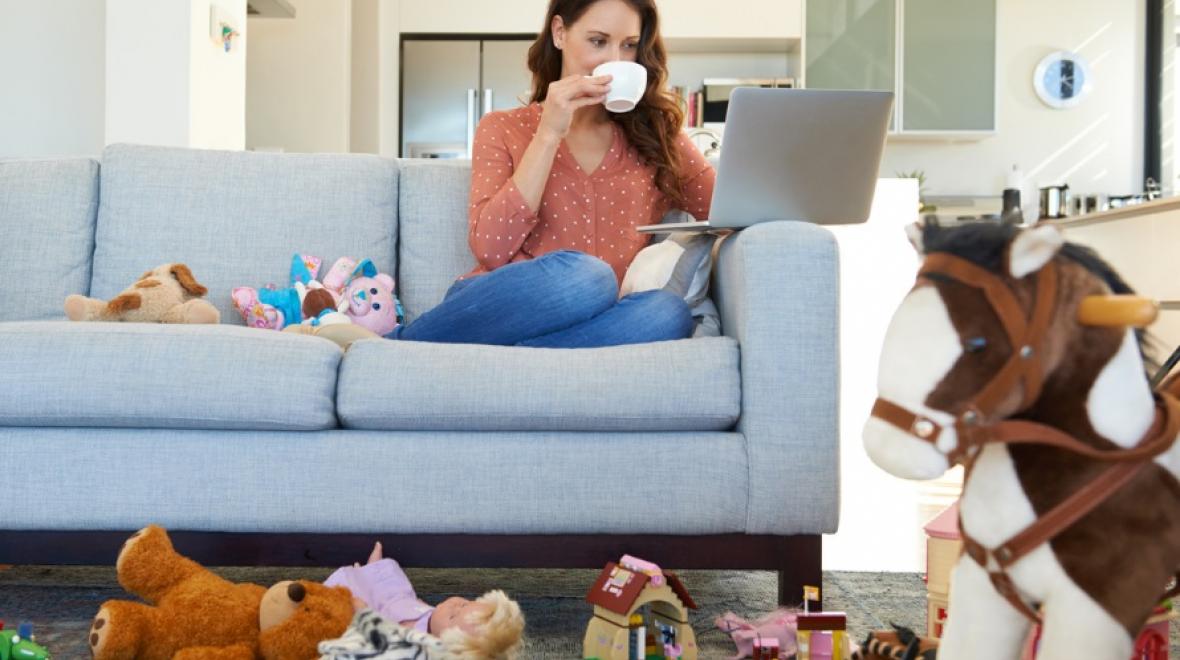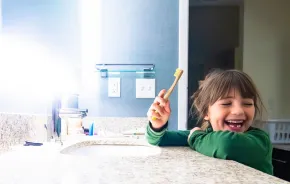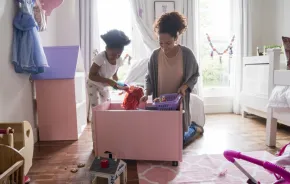
So, you’ve decided to declutter, but don't know where to start? There are different methods for decluttering. I’ll discuss some of them to help you come up with a game plan for getting your whole house decluttered.
Where to start?
When you are overwhelmed with the amount of stuff in your house, the most challenging part can be just getting started. Ask yourself the following questions:
- Is there a space that you could declutter quickly that would have a big impact?
- What spaces in your home seem to collect clutter the quickest and most often?
- Which room or area of your home brings you the most stress?
Your answers will help in formulating a game plan for your decluttering process. I like to start with an area that you can declutter quickly, but that will have a big impact. For me, that is my kitchen counters (which is also my answer for number two). You need a quick win to keep you motivated.
Save the most challenging or difficult space for later. You want to work up to those tasks. Completing a project and feeling good about it helps you continue to move forward to the next one. If you have ever done Dave Ramsey’s Financial Peace University, it is a very similar concept for how he approaches debt. You start with the lowest one so that you are motivated to continue with the process.
There are many different ways to approach the decluttering process. I will talk about four of them. As you read through, think about what would work best for you and your home.
Methods for decluttering
- Kondo method
- 20-minute method
- Weekend plan
- One room at a time
Kondo method
In perhaps the most popular book written on decluttering, The Life-Changing Magic of Tidying Up, Marie Kondo talks about her approach to decluttering. She advocates for taking out everything of a similar kind when you declutter. For instance, if you are cleaning out your closet you are going to take out all of your clothes. That includes getting everything out of your coat closet, storage, and anywhere else you have tucked away any clothes in your home.
For some categories, this method can feel overwhelming, as we might not even know where every office supply in the house is being stored. In many cases, part of the reason we have so much clutter is that we don’t realize how much we own. On average, our homes are larger than they used to be and thus there are more spaces to spread out our belongings.
We end up with duplicates and forgotten items when they are stored in a variety of places. Bringing everything together at once to go through and assess what stays and what goes is eye-opening. This is an important part of the process so you can accurately select what you want to keep or let go of.
The Kondo method creates awareness of ownership which helps you to be more mindful of not bringing clutter back into the house.
20-minute method
In this method, you use a timer set for 20 minutes and tackle projects in smaller chunks of time. The benefit to this is you aren’t likely to burn out or get too overwhelmed in a 20-minute timeframe. The downside is you won’t be able to tackle a big space in a short period of time. This option is great for smaller, more defined spaces, such as a kitchen (tackle one cabinet or drawer at a time). It may not work as well for a closet unless you divide it up into very specific segments (i.e. just t-shirts, skirts, purses, etc.). This method is great if you are short on time, but still want to make progress.
The 20 minutes per day approach can add up to a lot getting done if you use it consistently.
Do the whole house in a weekend
This is for the jump-all-in-at once kind of person. If you are very motivated and can find someone to watch your kids for the weekend while you up-end your house and tackle an area at a time, more power to you. This is kind of like sprinting a marathon, but there are people that this works well for.
If you do try this method, have a focused plan for the order in which you will tackle the rooms. It would not be fun to have started every room in your house, only to find you’ve run out of time to put your house back in order.
One room at a time
The one-room-at-a-time method is fairly self-explanatory. You pick a room to start with and go through each room in the house one at a time. In this method, starting with your bedroom is a good idea. The theory is that the room where you sleep should be the most restful and calming. If the last things you see before you turn out the lights at night are books, clothes or random items stacked up on your dressers and nightstands, that isn’t calming or restful.
Bathrooms are great to do next because they typically aren’t too challenging — most people don’t have a sentimental attachment to bathroom products. It depends on your home for how you want to tackle the remaining rooms. Some rooms are larger or have more things so they will take longer. Those rooms could be approached one section at a time.
I recommend ending with the most challenging room, which is usually where the majority of sentimental items are stored. The final space would be the garage. It is helpful to be able to use the garage as a staging area when working on the other rooms in your house. Items can be temporarily placed there until you are able to sell or donate them.











